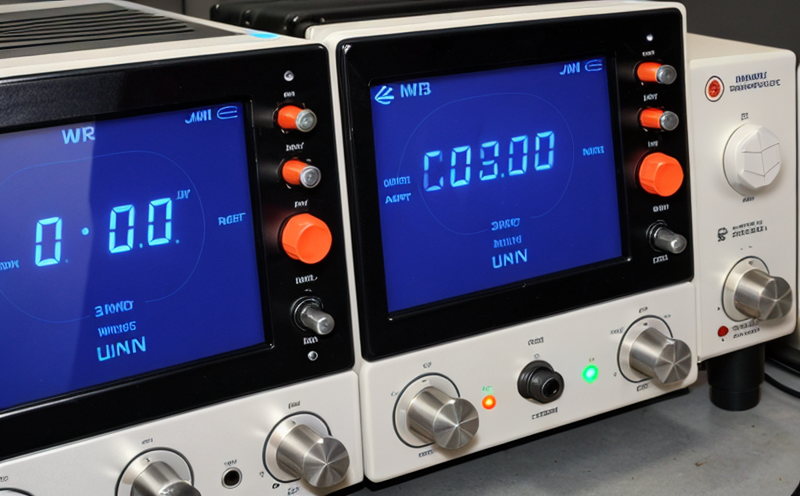ANSI C63.10 RF Compliance Testing of Smart Home Wireless Devices
The ANSI C63 series standards provide a framework for testing and rating sound systems, but they also encompass the radio frequency (RF) performance of devices. The latest standard in this series, ANSI C63.10, focuses specifically on the RF emissions and susceptibility of wireless communication devices, including smart home products.
Smart home devices like thermostats, security cameras, and lighting systems increasingly rely on wireless communication to function seamlessly within a network. Ensuring these devices meet industry standards is crucial for their interoperability, user safety, and overall reliability. ANSI C63.10 aims to standardize the testing process by setting clear parameters that manufacturers must adhere to.
The standard covers both intentional and unintentional RF emissions and susceptibility tests. Intentional emitters are devices designed to transmit signals over a specific frequency range. Unintentional emitters, on the other hand, generate radio frequency interference as a byproduct of their operation. Both types must be tested for compliance with the standard.
Testing under ANSI C63.10 ensures that smart home devices do not emit excessive RF energy that could interfere with nearby wireless networks or cause harm to users. It also verifies that these devices can withstand external electromagnetic interference without malfunctioning. This is particularly important in environments where multiple wireless devices operate simultaneously, such as homes and offices.
The testing process involves several stages, starting with the identification of relevant frequency bands for each device type. For instance, a smart thermostat might need to comply with FCC Part 15 regulations for unintentional emitters, while security cameras could require compliance with ETSI EN 300 440 standards.
Once the relevant standards are determined, the devices undergo rigorous testing in controlled environments. This includes both emission tests and susceptibility tests. Emission tests measure how much RF energy a device emits into its surrounding environment. Susceptibility tests assess the device's ability to function correctly when exposed to external electromagnetic interference.
The testing apparatus used for ANSI C63.10 compliance is sophisticated and highly specialized. It includes an anechoic chamber, which provides a controlled environment free from outside interference, ensuring accurate measurement of emissions. The susceptibility test uses various types of interference sources to simulate real-world conditions such as nearby Wi-Fi routers or cell towers.
After testing, the results are analyzed according to ANSI C63.10 criteria. Compliance is determined based on whether the device's emitted RF energy falls within acceptable limits and its susceptibility to external interference does not exceed specified thresholds. The final report provides detailed information about the tested device’s performance against these standards.
Meeting ANSI C63.10 requirements is essential for manufacturers looking to enter competitive markets or ensure their products meet regulatory requirements. By adhering to this standard, companies can enhance consumer trust and safety while promoting seamless integration of smart home devices into existing networks.
Scope and Methodology
| Test Parameter | Description |
|---|---|
| Emission Testing | Measures the amount of RF energy emitted by a device into its surrounding environment. Tests are conducted in an anechoic chamber to ensure accurate measurement. |
| Susceptibility Testing | Assesses how well a device functions when exposed to external electromagnetic interference. This helps verify the device's robustness against potential disruptions. |
| Frequency Band Identification | Determines which specific frequency bands are relevant for testing based on the type of smart home device being evaluated. |
| Interference Sources | Sources used in susceptibility tests to simulate real-world conditions, such as nearby Wi-Fi routers or cell towers. |
| Compliance Criteria | The standards set by ANSI C63.10 that devices must meet for compliance with the emission and susceptibility limits. |
| Testing Environment | Anechoic chambers provide a controlled environment free from outside interference, ensuring accurate measurement of emissions. |
| Data Analysis | The process of analyzing test results to determine whether the device meets ANSI C63.10 criteria for both emission and susceptibility tests. |
Industry Applications
ANSI C63.10 RF compliance testing is particularly important in the smart home sector, where multiple devices must work together seamlessly to provide enhanced living experiences. Manufacturers of smart home devices such as thermostats, security cameras, and lighting systems rely on this standard to ensure their products meet stringent performance criteria.
Thermostats that connect wirelessly need to emit minimal RF energy while being resistant to external interference from other devices in the home or office. Security cameras must not only withstand electromagnetic interference but also maintain clear video feed even when faced with adverse conditions like strong Wi-Fi signals. Lighting systems, especially those controlled via smartphone apps, should be robust enough to handle various wireless networks without performance degradation.
Compliance testing under ANSI C63.10 helps manufacturers identify potential issues early in the development process, allowing them to make necessary adjustments before product launch. This not only improves product quality but also reduces the risk of costly recalls and customer dissatisfaction post-launch.
Beyond smart home applications, ANSI C63.10 compliance is beneficial for any wireless communication device used in residential or commercial settings. The standard ensures that these devices are safe to use, perform reliably, and integrate effectively into existing networks. By adhering to this standard, manufacturers can build a reputation for producing high-quality products that meet stringent industry standards.
Eurolab Advantages
At Eurolab, our expertise in ANSI C63.10 RF compliance testing is backed by state-of-the-art facilities and a team of highly experienced engineers who specialize in this field. Our lab offers several key advantages that set us apart from other service providers:
- Comprehensive Testing Capabilities: We provide full-service solutions, covering all aspects of ANSI C63.10 compliance testing from start to finish.
- Accurate and Reliable Results: Our anechoic chambers are equipped with the latest technology, ensuring precise measurements of RF emissions and susceptibility.
- Regulatory Compliance: We stay updated on all relevant standards and regulations, helping you ensure your products meet current requirements.
- Dedicated Support: Our technical support team is available to answer any questions and provide guidance throughout the testing process.





